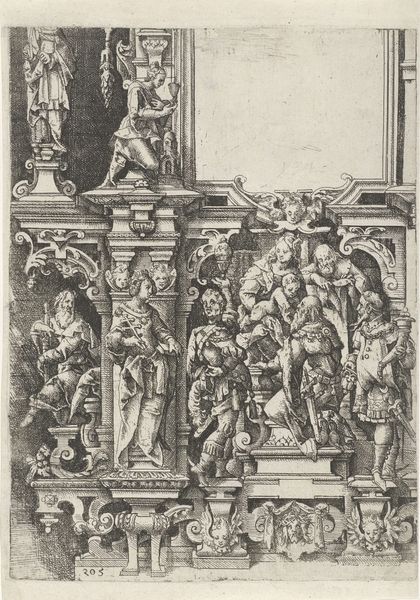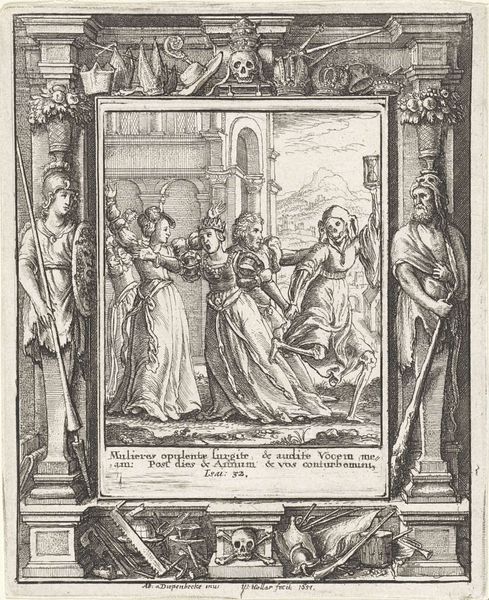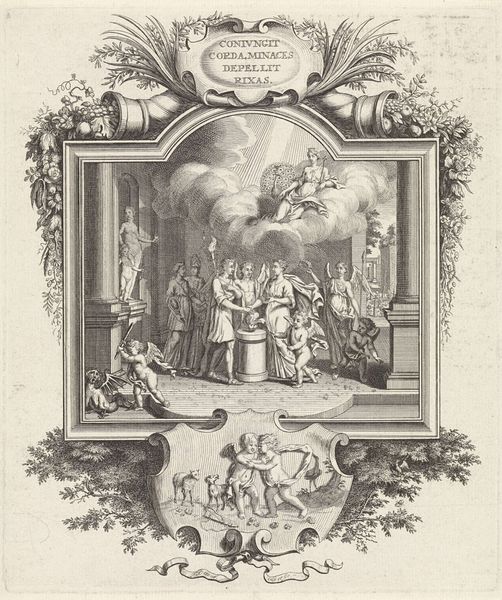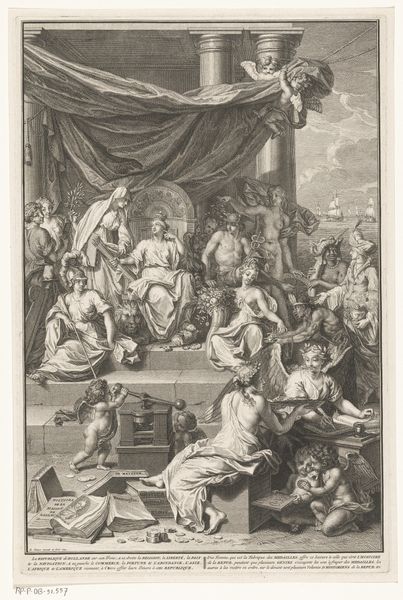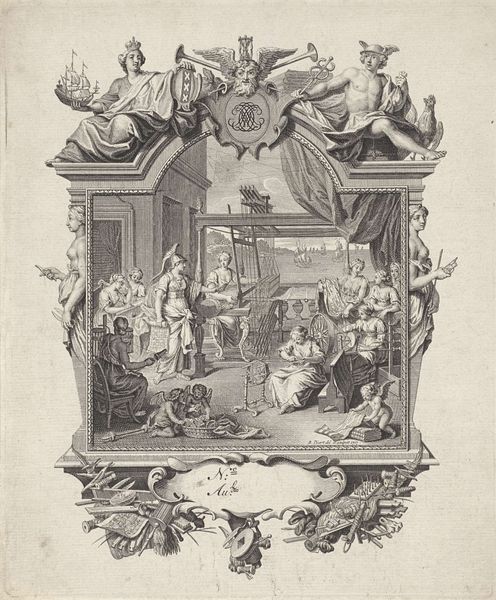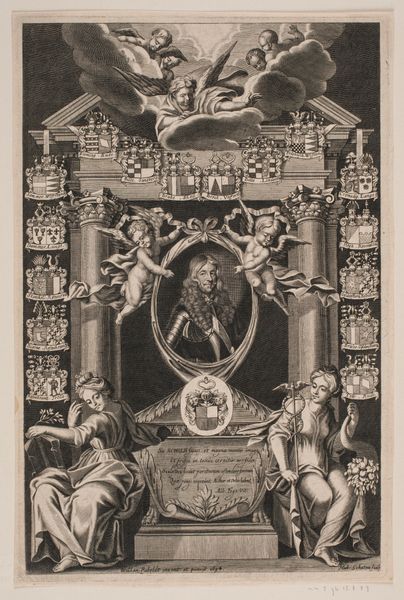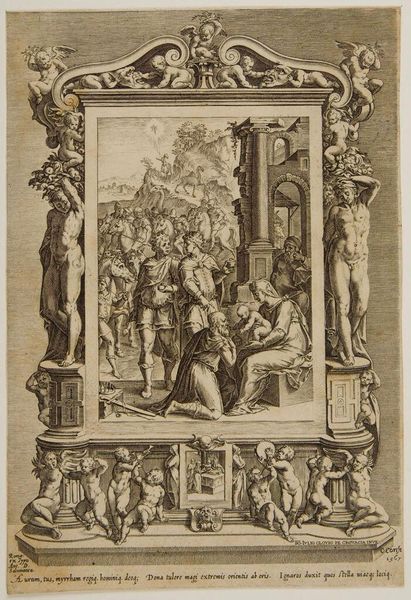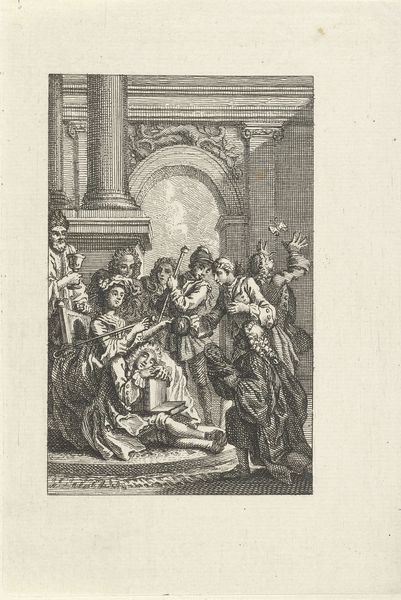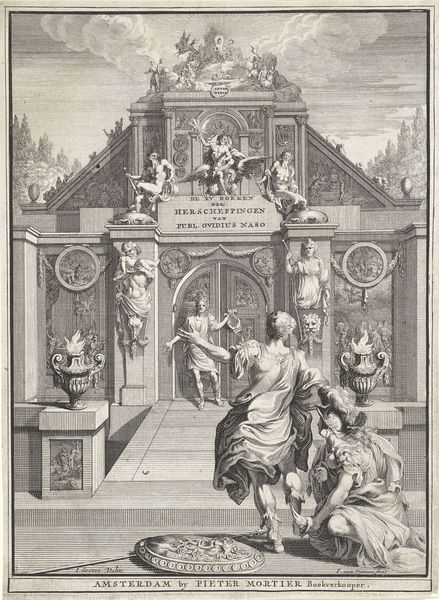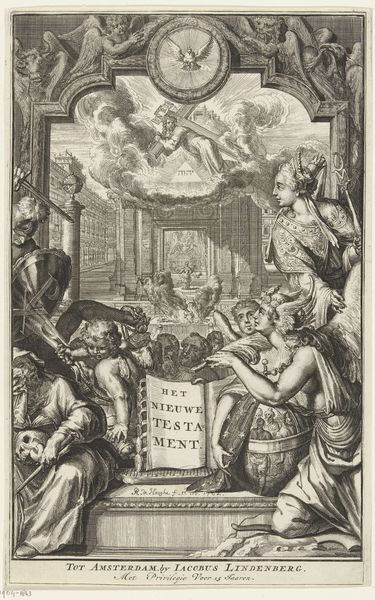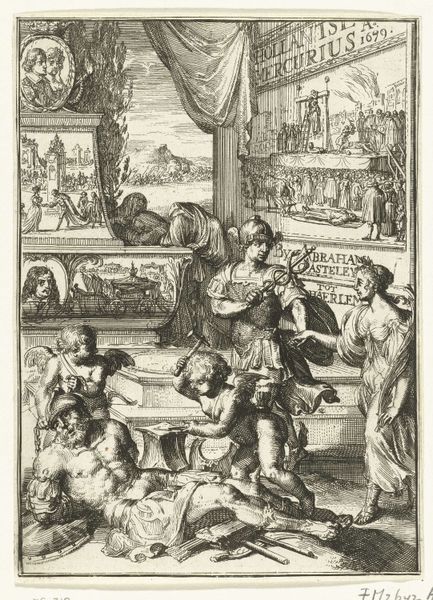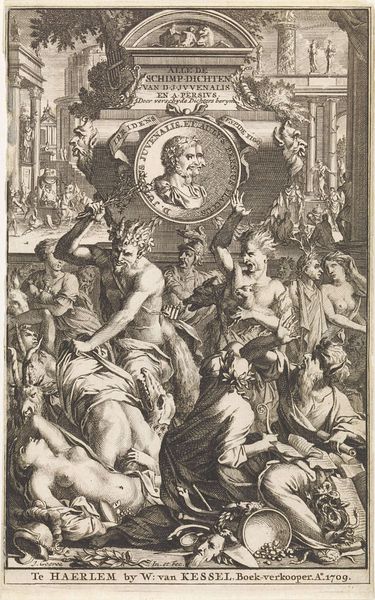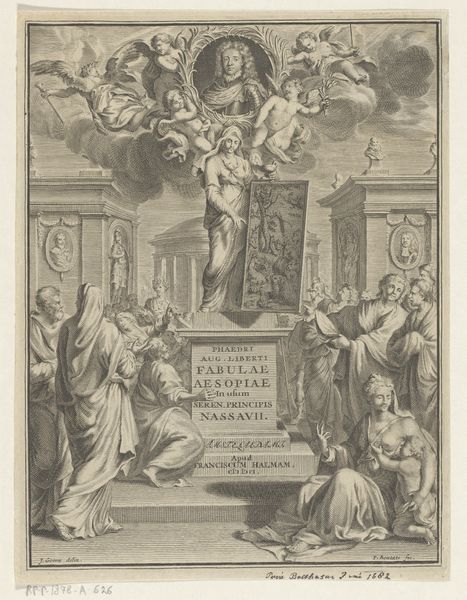
print, engraving
allegory
old engraving style
figuration
11_renaissance
pen work
history-painting
northern-renaissance
engraving
Dimensions: height 331 mm, width 217 mm
Copyright: Rijks Museum: Open Domain
Cornelis Cort made this print, "The Adoration of the Kings," in 1567, using an engraving technique. This process involves meticulously cutting lines into a metal plate, inking it, and then pressing it onto paper, transferring the image. Look closely, and you'll notice the complex interplay of lines creating depth and texture. Cort's mastery is evident in the control he has over the burin, the tool used for engraving, which allowed him to render fine details, from the folds of the fabrics to the expressions on the figures’ faces. Engraving was a highly skilled craft, demanding years of apprenticeship. Beyond its technical aspects, the print speaks to the social context of art production at the time. It was an efficient and reproducible medium, that facilitated the dissemination of images and ideas to a wider audience. So next time you see a print, consider the skilled labor involved in its making, and its role in shaping visual culture.
Comments
No comments
Be the first to comment and join the conversation on the ultimate creative platform.
